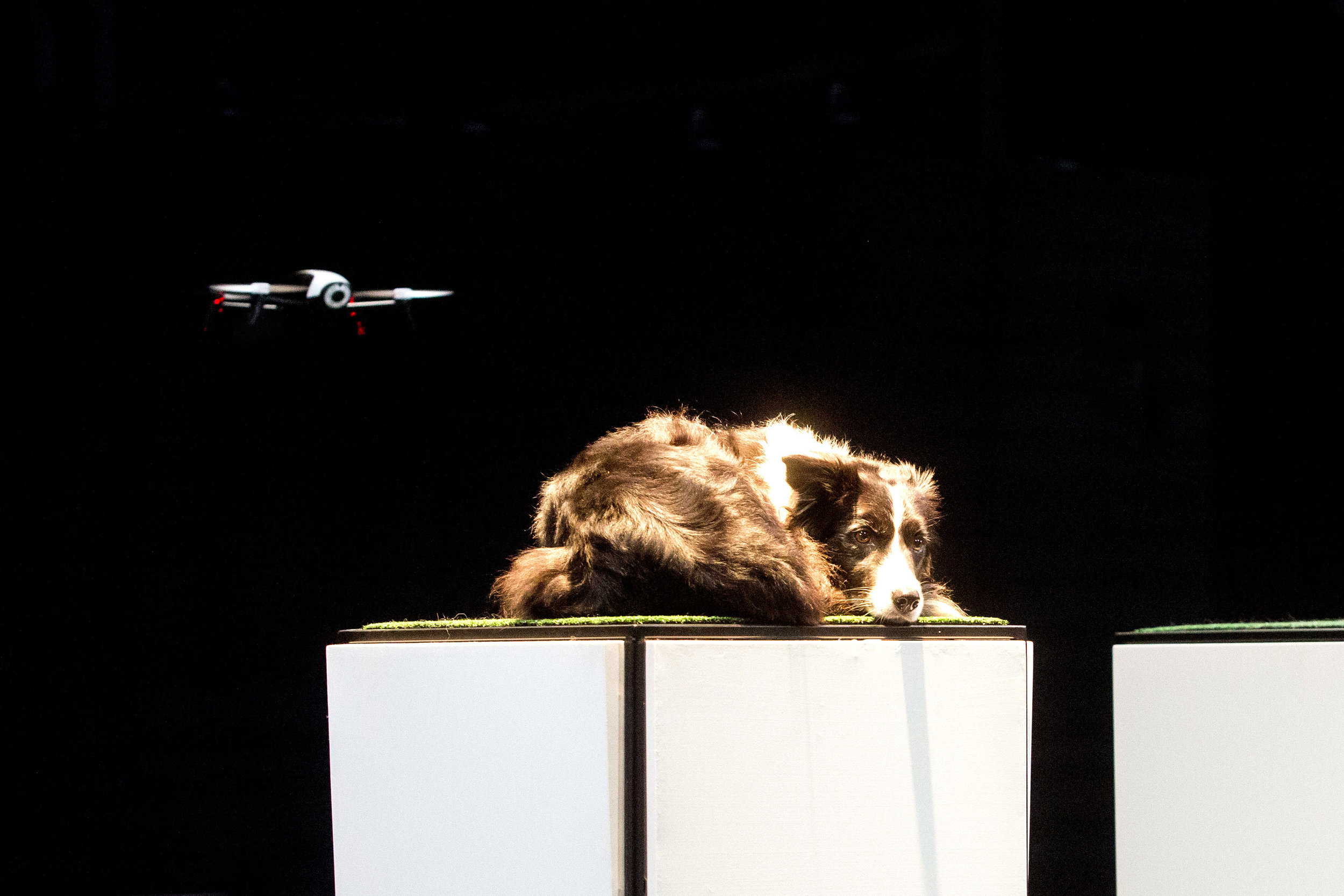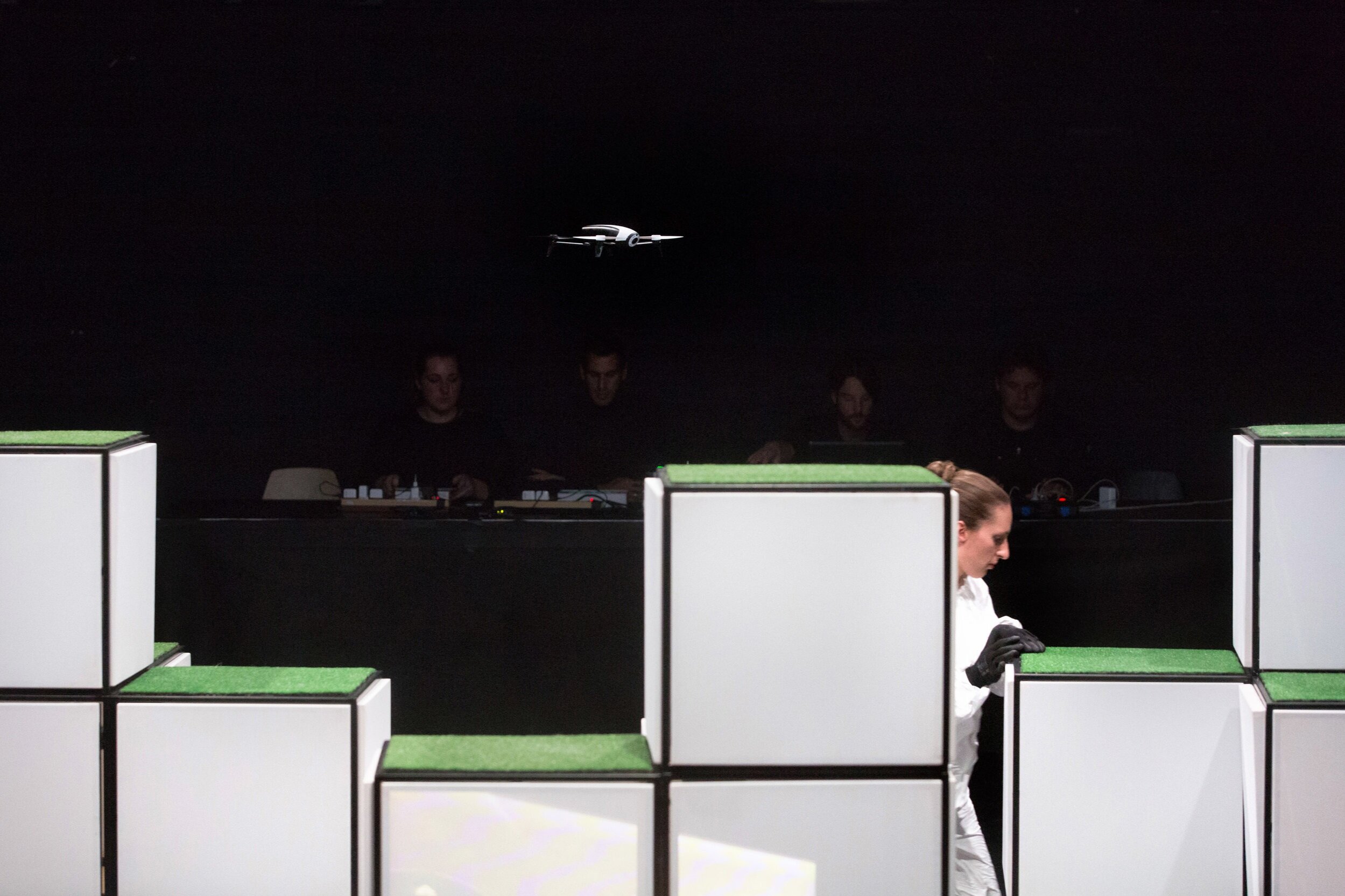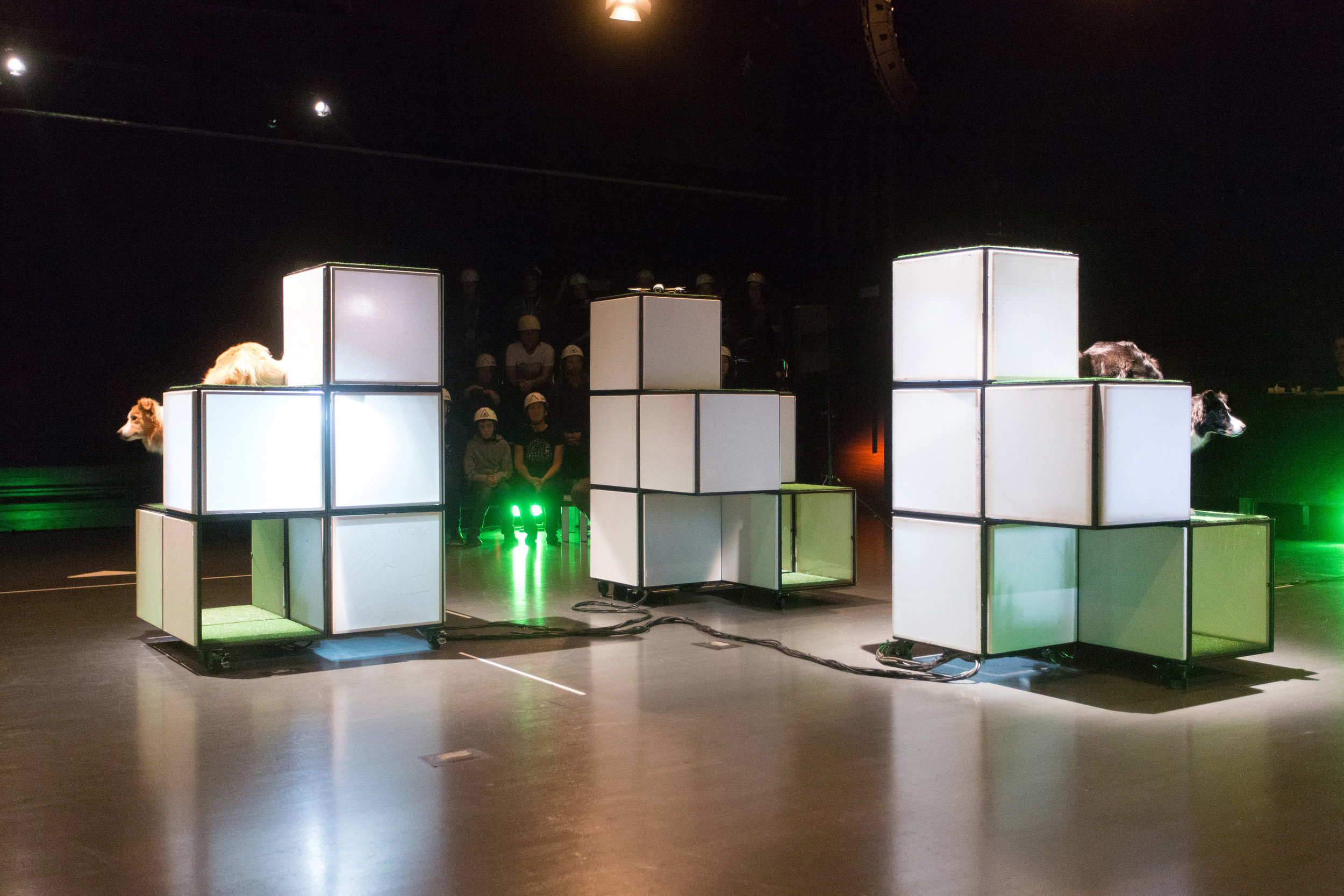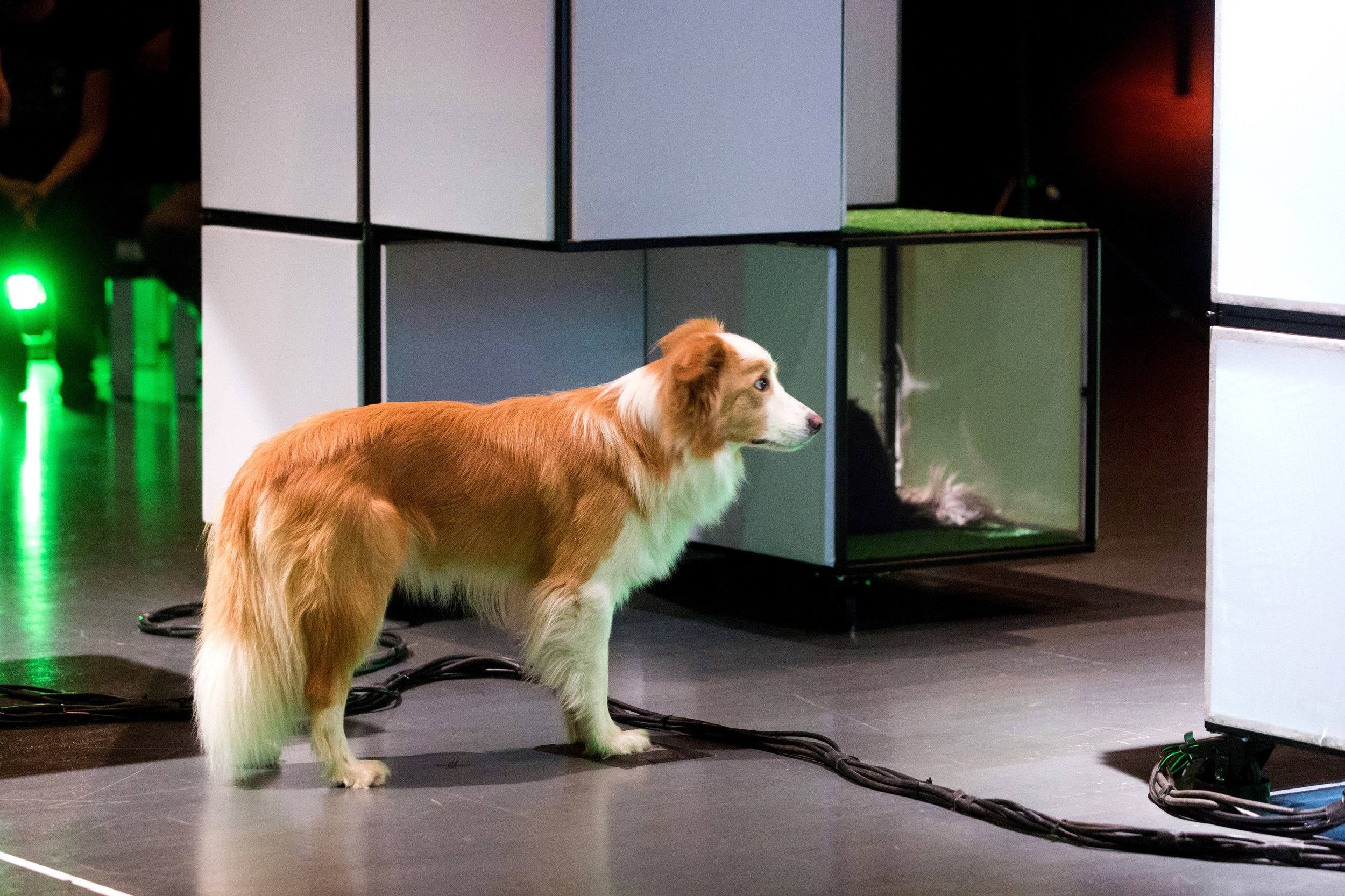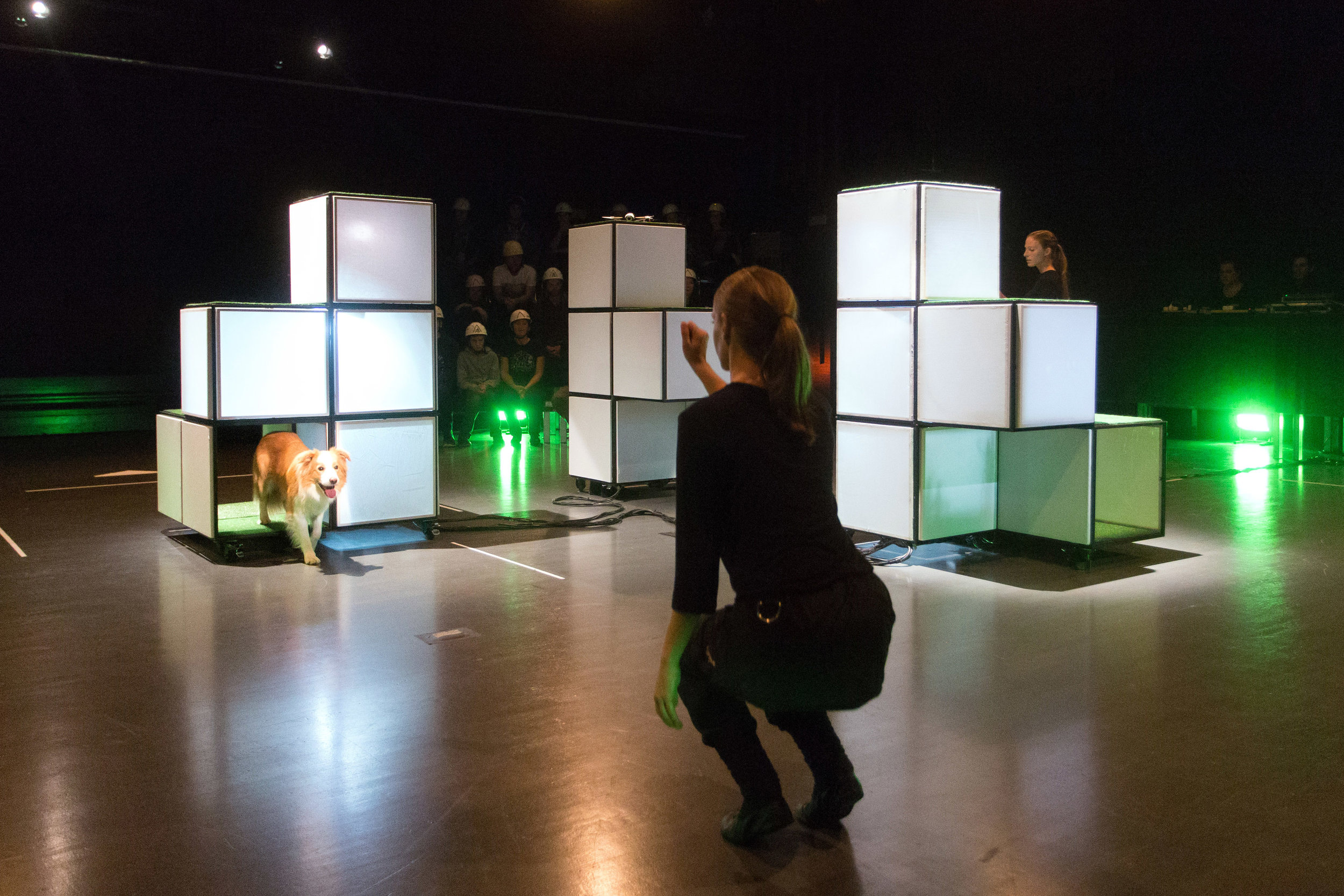Requiem For The Future
2018
Requiem for The Future was concieved as an experiment/performance in which the human body is substituted by animals and machines. The initial inspiration for the show comes from the concept of Das Triadische Ballet (1922) by Oskar Schlemmer, who understood the early 20th century zeitgeist through two key contemporary currents: the mechanical (the human as a machine and the body as a mechanism) and the primary impulses (the sudden rise of the creative urge, which is a wild, instinctive drive); he believed that he achieved a synergy of the Dionysian and the Apollonian creative principles in his choreographies. Schlemmer thought that the movement of puppets or marionettes was aesthetically superior to human movement; thus, he wanted to emphasise that every artistic medium is artificial, which he achieved through stylised movement, which he kept simplifying until it became reminiscent of the abstracted movement of puppets or marionettes. Similarly, Maja Smrekar is interested in the associative paradigm of animal movement and machine movement. Geometry, which is reminiscent of mechanical movements, is also always present in constant repetition in the formal part of dog training. At the same time, the human guidance of drones could also be understood as the inverse paraphrase of Kant’s reflection on upbringing and education: the human is an animal that needs a teacher/leader. Hence, at this point, the artist addresses particularly the gaze of the other: not only what the existence of humans means to animals, but also how “monstrous” the human appears to artificial intelligence.
On the basis of the theory of the harmony of spheres, the Greek mathematician Pythagoras formed the hypothesis that the Sun, the Moon and the rest of the planets in our solar system emit their unique orbital resonances, which are based on their orbital revolution, while the quality of life on Earth reflects the meaning of cosmic sounds which are otherwise inaudible to humans. Starting from his thesis, music, which shapes the temporal-dramaturgical arch of the performance, establishes one of the key layers in addition to the voice. Beginning with the granulations of sounds from nature and the creation of organic atmosphere in the first part (“DOG”), the performance continues with a cut into techno-steam-punk accompanied by the robust sounds of the flying drones in the second part (“DRONE”). A contrast to both appears with the shift to choir singing in the third part (the absent “HUMAN”), with the opening beats from a Bulgarian folk song Dragana and the Nightingale which speaks about the anthropocentric relationship in the race between nature and culture; yet, it is soon dispelled through the counterpoint of pulsating intervals based on some coefficients of the relations between the orbital frequencies of the planets closest to Earth (13 Venus orbits for 8 Earth orbits, 3 Venus orbits for 1 Mars orbit, 2 Earth orbits form 1 Mars orbit). The concept of the music of spheres entails the metaphysical principle in which mathematical relations express the tonal qualities of the energy manifested in numbers, shapes and sounds – combined into proportional patterns with which, at the end of the performance, we close the paradoxical circuit of human existence in the infinity of the universe.
Human perception of the animal machine as well as the machine run by artificial intelligence is quick to slip into the identification of demonising the other, for in the vicious circle of dialectics we always stop with the discourse of feelings and subjectivisation of the (human) soul.
In establishing links between technology, nature, the hybrid anthropo-, zoo- and technomorphic nature of robots and animals, we are dealing with an interrogation of the contemporary social paradigm in which humans have destroyed nature almost completely due to the excessive exultation of our own culture; yet, despite this, nature survives and lives more fully in symbiosis with technology only after mankind has destroyed itself.
The music from the performance is available from the online publisher Kamizdat under the conditions of the Creative Commons licence.
Actress: Alenka Marinič
Dogs training: Mia Zahariaš
Dog trainers: Mia Zahariaš, Tina Šolar
Dogs: Atiya Maiara and Express O Magic of Michéles Garden; Nuria del Somni Catala and Tails of Magic Fang
Drone technology: Alen and Mia Balja
Drone management: Alen Balja, Blaž Kovačič, Urša Purkart, Bojan Vlah, Maja Smrekar
Music: Luka Prinčič
Lighting design: Miloš Vujković
Set design: Andrej Strehovec
Set design manufacture: ScenArt
Assistant: Urša Purkart
Head of performance and sound designer: Luka Bernetič
Producers: Pija Bodlaj and Marcela Okretič
Supported by: the Ministry of Culture of the Republic of Slovenia and the Municipality of Ljubljana.
